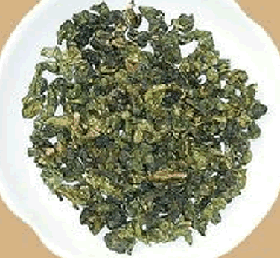减肥课堂:乌龙茶的瘦身功效
[ 2007-06-06 12:59 ]
|
虽然西方一直对“茶的减肥功效”持怀疑态度,但中国医学研究者日前声明,乌龙茶确实有分解脂肪、减肥健美等妙效。本届“宋庆龄儿科医学奖”获奖人郭锡熔认为,乌龙茶含有较多的茶多酶,会有效减少皮下脂肪。
|
|
|
|

|
| Scientists: Oolong tea helps you lose
weight. |
Scientists have proven that drinking
tea can help people lose weight.
During a five-year study, researchers discovered five new genes related to
obesity, which point to the cause of the condition. However they also found that
the polyphenol compound in tea - especially Oolong tea - can help obese people
battle the bulge.
The focus of the study was to help address growing obesity among Chinese
children, especially in cities.
The groundbreaking research reveals that overeating is not the only cause.
"Diet and lifestyle are only the external reasons," said Guo Xirong, director
of the Nanjing Institute for Pediatrics affiliated to Nanjing Medical College.
"The genetic conditions of the individuals could predispose, or even cause,
children and adolescents to become overweight."
Guo won the Soong Ching Ling Foundation
Pediatrics Award last week for his pioneering research in
identifying the new genes related to obesity and suggesting new intervention
strategies.
Despite their findings, Guo admits there is no magic bullet for treating
childhood obesity. But he said a healthier diet and lifestyle will help.
According to Guo, the seeds of obesity can be planted in children much
earlier than generally believed.
When children are still in the fetus, they tend to become obese later in life
if pregnant mothers eat too much and have a dramatic increase in weight.
Compared to bottle-fed infants, babies who are breastfed are less likely to
become obese later in their life because the secretion of breast milk is
limited. Bottle-fed babies tend to develop a larger appetite because they are
fed each time they cry.
Chinese have long believed in the link between tea drinking and weight loss
but many health authorities in the West have been skeptical about it.
Guo particularly recommends Oolong tea, one of the lesser-known teas in the
West. Of the total amount of tea produced and consumed in the world, 78 percent
is black, 20 percent is green, and less then 2 percent is Oolong tea.
Black tea is consumed primarily in Western countries, the Middle East and
South Asia whereas green tea is drunk primarily in China, Japan and a few
countries in North Africa.
The production and consumption of Oolong tea are primarily confined to
southeastern China.
(China Daily)
Vocabulary:
Soong Ching Ling Foundation Pediatrics Award: 宋庆龄儿科医学奖
(英语点津陈蓓编辑)
|